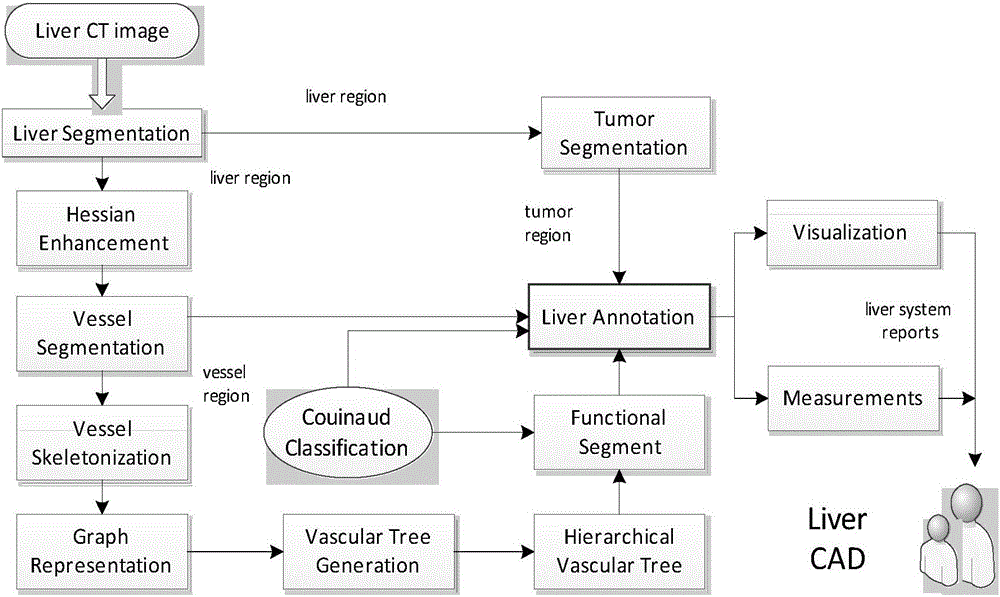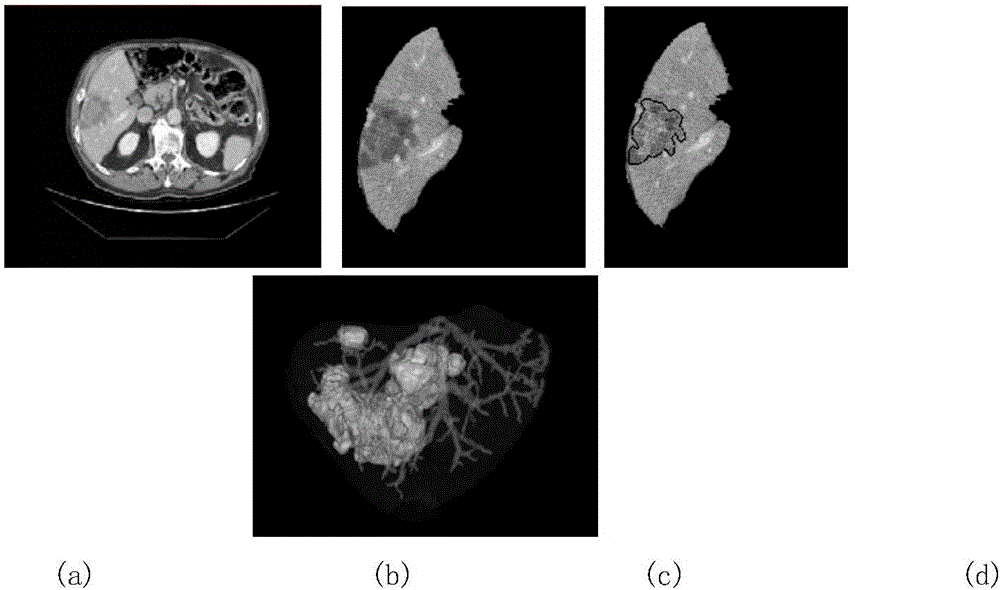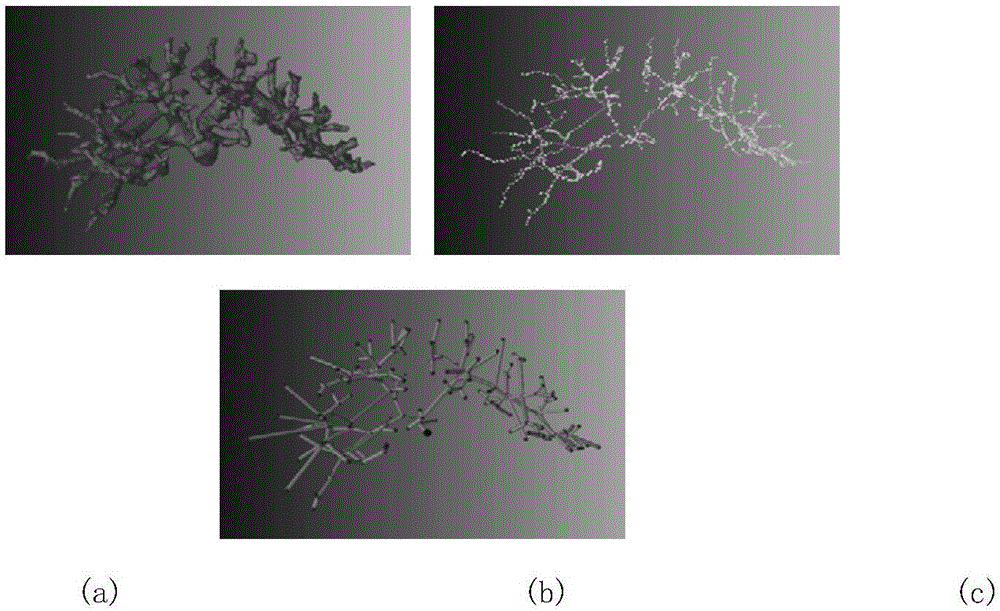Liver function region explaining and analysis method including three-dimensional visualized display and attribute measurement
A liver function and liver technology, applied in the field of computer-aided medicine, can solve problems such as large amount of calculation and no application of liver system, and achieve the effect of reducing complexity, facilitating calculation and analysis, and reducing misjudgment
- Summary
- Abstract
- Description
- Claims
- Application Information
AI Technical Summary
Problems solved by technology
Method used
Image
Examples
Embodiment 1
[0043] Refer to attached picture, in figure 1 A flow chart of the method of the present invention is provided in , and a group of embodiments are provided according to the flow chart of this diagram. The method first extracts the liver region, including the liver, hepatic vessels, and liver tumors, then extracts the hepatic portal vein skeleton and generates a directed acyclic graph, that is, the hepatic portal vein vascular tree, and then uses the vascular tree to divide the liver into corresponding functional segments, and finally Generate liver analysis report.
[0044] exist figure 2 In the example shown, the figure 2 (a) is a piece of original abdominal image data slice, figure 2 (b) is the segmented liver and hepatic vascular regions, figure 2 (c) is the segmented liver and liver tumor area, figure 2 (d) is the 3D visualization result of the whole liver area including liver, hepatic vessels and liver tumor.
[0045] Extract the hepatic portal vein in this embo...
PUM
 Login to View More
Login to View More Abstract
Description
Claims
Application Information
 Login to View More
Login to View More - R&D
- Intellectual Property
- Life Sciences
- Materials
- Tech Scout
- Unparalleled Data Quality
- Higher Quality Content
- 60% Fewer Hallucinations
Browse by: Latest US Patents, China's latest patents, Technical Efficacy Thesaurus, Application Domain, Technology Topic, Popular Technical Reports.
© 2025 PatSnap. All rights reserved.Legal|Privacy policy|Modern Slavery Act Transparency Statement|Sitemap|About US| Contact US: help@patsnap.com



